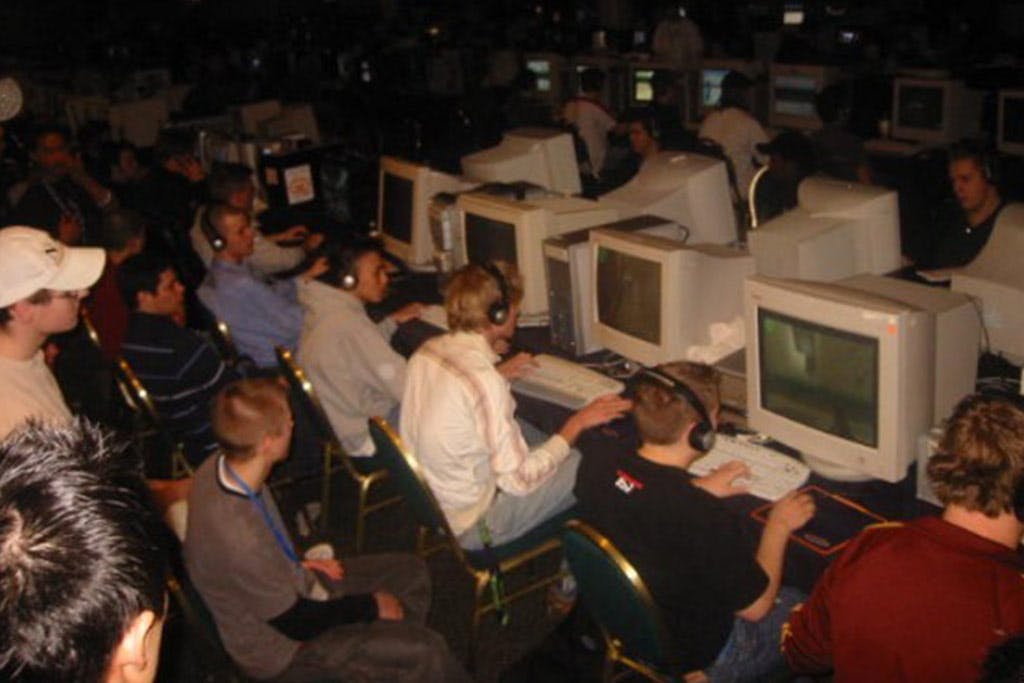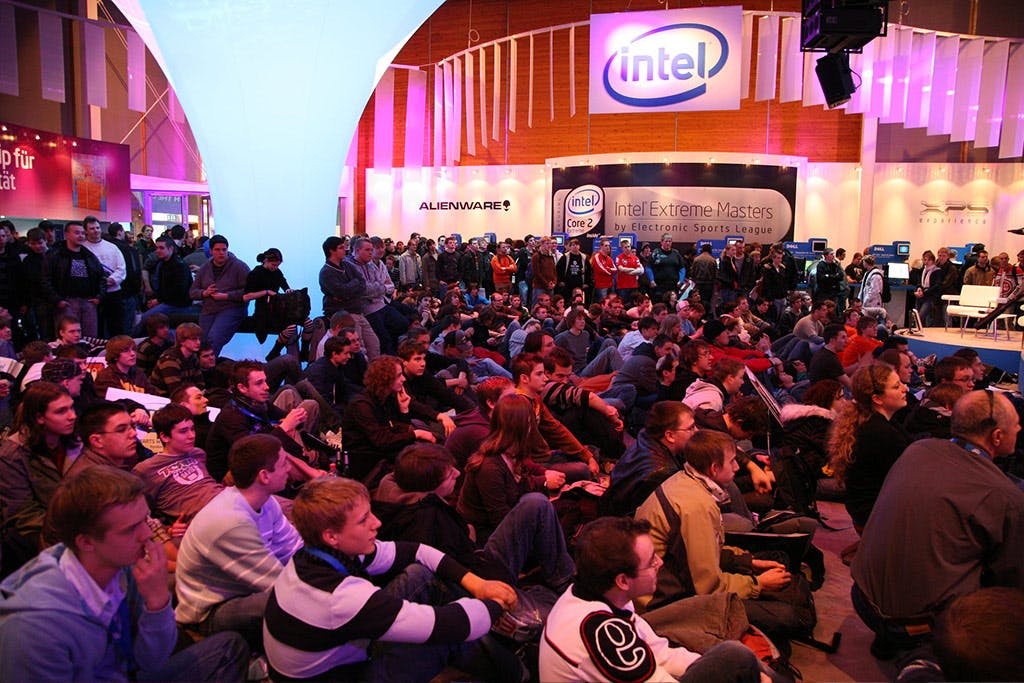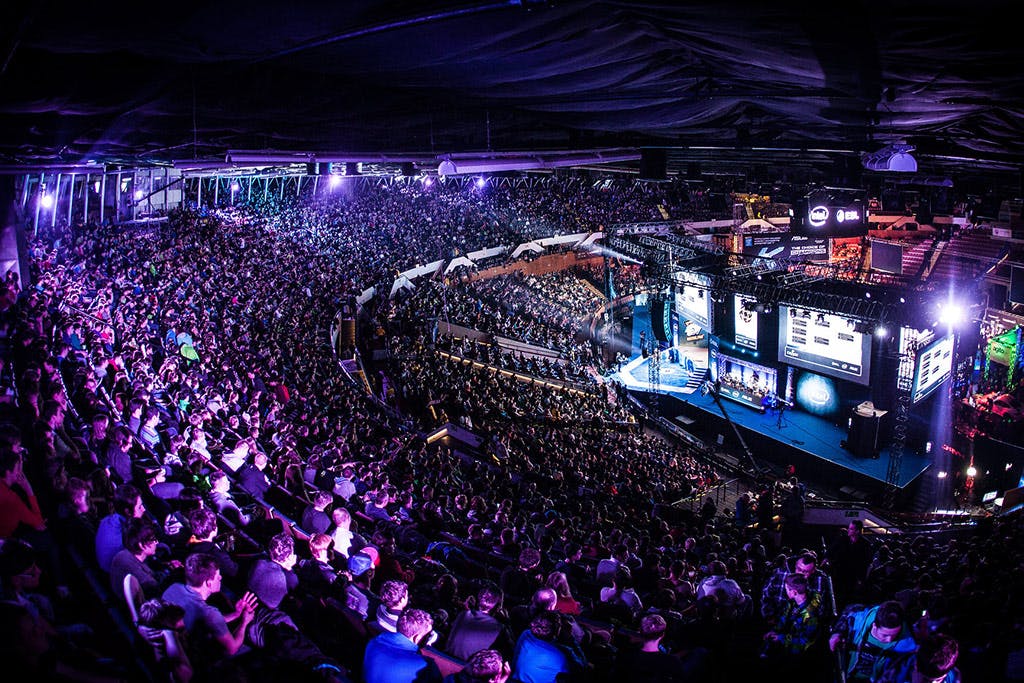When Minh Le and Jess Cliffe released the first beta of Counter-Strike, esports was still in its infancy. As internet cafes became more and more popular in the 1990s, games like Street Fighter, Quake, and StarCraft all had their first tournaments. But it was Counter-Strike, the 1999 Half-Life mod made in a college bedroom, that would be the first team-based esport to truly explode in popularity.
Le had started work on Counter-Strike a year earlier, before the SDK (software development kit, the tool that makes modding possible) was even released. 1999 saw 17 versions of the beta, with the game getting closer and closer to its final form. In 2000, Valve had seen enough; they bought the rights to CS from Le and Cliffe, and in September version ‘1.0’ was released to the public.
Two months later, CPL would host the first top-tier events for the game, originally as a sideshow to the still more popular Quake. But in 2001, the esports side of Counter-Strike took off. Tournament organisers like ClanBase, LAN Arena, and World Cyber Games joined CPL to create a true circuit of tournaments with prize pools in the thousands.
Counter-Strike had all the makings of a great esport. There was the surface level excitement of incredibly precise aim, visibly challenging recoil and high intensity clutches. Yet, even more important than aim was positioning, allowing Counter-Strike to reach a depth far higher than its ‘twitchy’ FPS nature might have implied. The format was another factor, with the best of 30 round games (MR15) giving both sides ample opportunity to change the momentum of a match.
It’s important to remember how different 2001 was to today. There was no Twitch, no YouTube - not even Twitter. The vehicles we use today to watch and follow esports simply did not exist. At the beginning, fans had to join IRCs (Internet Relay Chats), waiting for results to come in and replays to be uploaded. If you wanted to watch a match live, you had to be there in person, or use the game’s ‘TV’ feature whereby you could connect to the tournament server (with a delay).
However, this "TV" experience remained far from the clean and polished products of today. There were no observers, meaning you had to follow the action yourself. Streams did become more available as time went on, allowing for commentary and other broadcast features to begin. But, the streams were rarely fully functional and many preferred using the "TV" method. One perk of how hard it was to watch games live was the knock-on-effect for fragmovies - naturally, frags were more exciting when you hadn't seen them yet - where a real community was built. Despite all the accessibility obstacles, the competitive side of Counter-Strike was blooming.

December 2001 saw the game’s first major, CPL Winter, with the lion’s share of the $150,000 prize pool going to Potti and HeatoN’s victorious Ninjas in Pyjamas squad. 2002 saw three more unofficial Majors, a CPL Summer, Winter and World Cyber Games in Korea. In 2003, another $100,000+ tournament began with the ESWC.
2003 was also the year of the last major CS update, version ‘1.6’, where CS was ported to Steam. Steam was not Valve’s only big project at the time, though - 2004 was the year of Half-Life 2, on the new Source engine, and CS would also get a sequel: Counter-Strike: Source.
Yet despite the graphical improvement, most of Counter-Strike’s top professionals did not swap to the new game. They had worked too hard to reach their skill ceiling in the original game - a skill ceiling they believed Valve had made lower with Source - to give that up.
So, despite the release of Source, 1.6 remained the game of choice for Potti, f0rest, NEO, Get_RiGhT, and co - aside from the bizarre, in hindsight, WCG in 2004 that was played on Condition Zero. The prize money continued to flow, with ESWC 2006 setting a new record of $160,000 as the esport enjoyed its golden years.
The recession in 2008, though, spelled bad news in the short term for CS. In 1.6, CPL went bankrupt in 2007 and ESWC followed in 2009. However, the real damage was done in Counter-Strike: Source.
Source had attracted some 1.6 talent like the Brazilian cogu and HeatoN (as a manager) along with new names like RattlesnK, HenryG, and Fifflaren and it seemed to get the prize pools to match with the launch of the Championship Gaming Series in 2007. The franchise league’s prize pool dwarfed all that had come before: Chicago Chimera, victors of the inaugural CGS World Championship, won $250,000, nearly double the prize pool for the whole field of most 1.6 Majors.
But, along with the funding from DirectTV, BSkyB, and StarTV, came changes to the traditional CS format. There was a draft for players, models were edited to have brightly coloured sports jerseys and all games would be best of ones, with every game lasting 18 rounds, whether that be 14-4 or 10-8.
This was because CGS combined the results in all their esports titles with a ‘points’ system - meaning a win in Source did not always result in progression to the next stage of the bracket. In the 2007 grand final, Carolina Core defeated Chicago Chimera 11-7 in Source, but Chicago would take the trophy after wins in all four other esports.
The real problem with CGS, however, was financial - its spending on the tv studio, player salaries, and massive prize pools were predicated on a demand that did not yet exist. And, once the recession hit, this was laid bare for all to see. In a 2008 blog post titled “an idea whose time came too early,” the league was forced to announce its closure after just two seasons (of a promised five).
Source players went from earning $30,000 a month to nothing overnight. And worse, CGS' exclusivity meant there were few tier-one tournaments in the open circuit, meaning Source had to undergo a complete rebuild of its scene. But rebuild it did, and the last few years of Source saw the rise of teams like VeryGames, featuring Ex6TenZ and RpK - the CGS debacle had very little to do with the video game itself. Source's esport still had an audience, and the players to hold that audience.
1.6, without the presence of CPL - who had run two majors and more than half of the S tier circuit most years - also needed to rebuild. But, passion for the game remained. In the wake of CPL’s exit, ESL launched Intel Extreme Masters in 2007. The scene had been knocked down, but IEM's seven events in 2009 along with a World Championship finals (as well as the return of ESWC) helped CS get back on his feet. The years after the financial crash still featured some fantastic storylines, such as the rise of markeloff’s NaVi and the continuation of the battle between f0rest and NEO, and CS 1.6 remained one of the best and most popular esports on the planet.
IEM’s World Championship, in particular, proved the demand for esports was still growing, even after the recession. In its debut at CeBIT in Hannover, they had 1000 square meters. In 2009 ESL were given 8000 square meters but they still filled the hall, forcing a one-in-one-out system at the entrance. The advent of better streaming technology meant viewers at home also were starting to get a better experience - IEM saw a “1000% increase in [online] viewership” in 2011 compared to 2010. 1.6, more than ten years after its birth, was still going strong.

By this time, though, Starcraft 2 and the MOBAs of DotA 2 and League of Legends were securely more popular than both versions of Counter-Strike. Valve's solution was to unite the community, releasing a new game in 2012: Global Offensive. With CS:GO, a new chapter of the esport's legacy began.
Yet, like with the introduction of Source, many professionals were initially sceptical - the game was extremely different in 2012 to what it is today (and not in a good way). Team owners shared the player’s concerns, with Evil Genius CEO Alex Garfield one of many to criticise the game publicly for catering to a more ‘casual’ player base. This hesitancy to transition, though, only benefited those who did switch. Most notably, f0rest and Get_RiGhT’s Ninjas In Pyjamas.
The scene may have still been relatively small in 2012 and early 2013 - Source and 1.6 events continued - but by changing games early NiP gave their already legendary players the platform to dominate. Going on a 87-0 map win streak, NIP defined the first few years of CS:GO. Seeing their success, most of the stragglers swapped to CS:GO, with most tournament organisers switching to the new release for events with large prize pools.
@Slasher laughed so hard i spit out my drink
— Alexander Garfield (@alexgarfield) August 23, 2012
The scene was blooming - and that was before the reveal of Global Offensive’s ultimate trump card: the help of Valve. Eager to make the game a success, Valve announced the arms deal update in 2013, featuring the “eSports case” as a way to “support competitive esports”. The purpose of this was revealed a month later with the announcement of DreamHack Winter, the first Valve sponsored CS:GO Major. With a prize pool of $250,000 - the largest non-CGS prize purse ever - the development team set the link between game and esport in stone.
The benefits were clear; in December 2013, there were an average of 46,788 concurrent players of CS:GO, 17,000 more than November. Esports events were the best advertisement Valve could buy for Counter-Strike but the esport was so much more than that. The player base kept growing, and in 2014 CS:GO was brought to stadiums for the first time, with the second Valve-sponsored Major, EMS Katowice, filling out the Spodek Arena in Poland.

The product of esports events kept improving, and the game’s popularity did too; in December of 2015 CS:GO had a peak player base of 823,694, compared to 367,634 in December 2014. Much of this growth can be credited to the community building around skins but the role of esports should not be discounted in the hype that just kept building around this time.
In 2016, the Major prize pool was increased from $250,000 to $1,000,000. As well as the Spodek, ESL were filling the Lanxess Arena in Cologne and the Barclays Center in New York. We had reached the prize pools and professionalism that CGS promised in 2008 but with a key difference - this time around, it was self-sufficient. In 2017, the Intel Grand Slam added another $1,000,000 goal for teams to aim towards.
There was a model for people playing at home or in internet cafes around the world that displayed the esports dream. This was not just for players - Counter-Strike was made special by everything around the scene: coaches, commentators, analysts, journalists, YouTubers, referees. Despite the recession, despite the fall of CGS, Counter-Strike endured. Anders and Semmler, with DDOS attacks causing technical pauses in nearly every match, continued to provide entertainment to us at home.
It is the sacrifice of so many in the early days of not just CS:GO, but Counter-Strike, that provides us with a scene today. They could have taken their skills anywhere and earned far more, but their love for the game kept them in esports. Because of people like them, what began as a Half-Life mod with a small community in online forums now provides livelihoods for thousands of people and entertainment for millions.
It has consistently filled stadiums month after month - something we may have taken for granted before the pandemic but definitely do not now. Just listen to the noise of the Lanxess during NBK and flusha’s famous knife fight. It is a visceral expression of the impact of Counter-Strike; a sound we have missed so much during the pandemic.
Counter-Strike has already changed so much in its twenty-one-year lifespan. Many see it as close to perfect as an FPS can get gameplay-wise; where else can you be so great in so many different ways? CS is a team game but it is one where superstars can rise above, using the game to express themselves in infinite ways.
In 1.6 we could compare the cerebral play of NEO to f0rest’s impeccable first bullet. Early CS:GO saw similar stylistic clashes: there was the quick-scoping of kennyS and the ultra-low sensitivity AWPing of GuardiaN.
History does not repeat itself, but it does rhyme: we now have the shaky flicks of s1mple in violent opposition to the methodical perfection of Zywoo. Those two might be the best we’ve seen so far, but they are unlikely to hold that honour forever. Their next challenger may even be among us already - there is sh1ro, b1t, m0NESY, saffee, YEKINDAR; the list goes on.
This applies to teams too - there is not one way to win. The differences in style between CS' greatest teams - NIP, fnatic, Luminosity/SK, Astralis - shows that. And Counter-Strike's meta keeps cycling, just in time for the next crop to come through. Teams like NaVi have built upon everything that has come before, from the SK of the early 2000s to the Astralis of the late 2010s.
Counter-Strike is still kicking, more than twenty years after its inception. With all these new superteams, 2022 is setting up to be CSGO's best year yet - its legacy has only just begun.
ESL Gaming GmbH | Schanzenstraße 23 | 51063 Cologne, Germany
Tel.: +49 221 - 880 449 - 0 | Fax: +49 221 - 880 449 - 999 | info@eslgaming.com
Copyright 2025 © | All Rights Reserved | Imprint | Privacy Policy | Privacy Settings